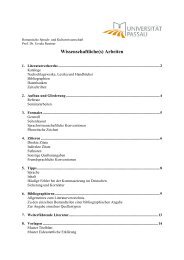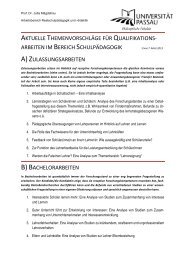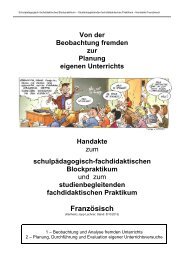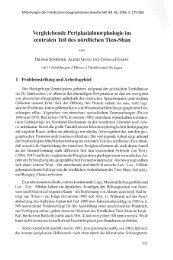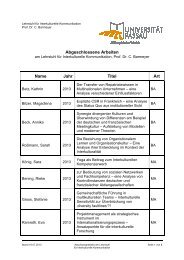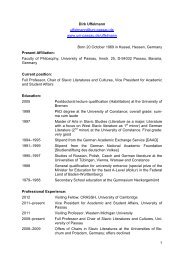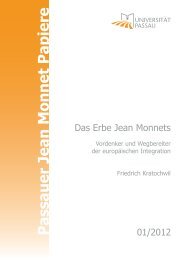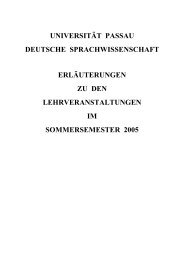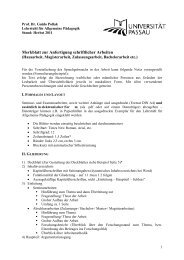The attempt to adopt a mixed-member proportional election system ...
The attempt to adopt a mixed-member proportional election system ...
The attempt to adopt a mixed-member proportional election system ...
You also want an ePaper? Increase the reach of your titles
YUMPU automatically turns print PDFs into web optimized ePapers that Google loves.
56<br />
29 Shortly after the Thai-language draft constitution had been published, an Englishlanguage<br />
translation was circulated, though without attribution (Draft Constitution…<br />
2007). <strong>The</strong> important parts of article 92 were translated as follows.<br />
“Section 92: Election of <strong>member</strong>s of the House of Representatives under Section 91<br />
shall be carried out as follows:<br />
(1) Three hundred and twenty <strong>member</strong>s of the House of Representatives shall come<br />
from <strong>election</strong> held under constituency basis. …<br />
(2) Eighty <strong>member</strong>s of the House of Representatives shall come through <strong>election</strong> held<br />
under <strong>proportional</strong> basis. <strong>The</strong>re shall be four elec<strong>to</strong>ral zones, each of which shall have<br />
equal numbers of inhabitants and adjoining one another. Each elec<strong>to</strong>ral zone shall<br />
have 20 <strong>member</strong>s of the House of Representatives by calculating the ratio [proportion]<br />
of the number of <strong>member</strong>s of the House of Representatives from the vote ratio<br />
[proportion] of the political party list …”<br />
<strong>The</strong> final version of (now) article 93 says, “Section 93. <strong>The</strong> House of Representatives<br />
consists of four hundred and eighty <strong>member</strong>s, four hundred of whom are from the<br />
<strong>election</strong> on a constituency basis and eighty of whom are from the <strong>election</strong> on a <strong>proportional</strong><br />
representation basis” (Constitution of the Kingdom of Thailand, B.E. 2550<br />
[2007]).<br />
30<br />
คณะกรรมาธิการยกร่างรัฐธรรมนูญ (April 26, 2007, p. 58f).<br />
31 Ibid.<br />
32 He was the secretary general of the Council of State, the government’s legal advisory<br />
body.<br />
33 Ibid., p. 94. Komsan seemed <strong>to</strong> have indicated this design element on page 80 already.<br />
This corresponded <strong>to</strong> the German MMP <strong>system</strong>, in which important figures of<br />
political parties might run in a constituency, but also on the party list. <strong>The</strong> purpose<br />
was <strong>to</strong> make sure that important political personnel made it <strong>to</strong> the House. <strong>The</strong>se politicians<br />
were “secured” (abgesichert in German) on the party list.<br />
34 This could be done by abolishing the list al<strong>to</strong>gether, by reducing the number of party-list<br />
MPs, by regionalizing the lists, by abolishing the threshold, or by allowing constituency<br />
MPs <strong>to</strong> become ministers.<br />
35 For his credentials as an arch-foe of Thaksin, see Chermsak’s book series เจิมศักดิ <br />
(2546, 2547 a-c, 2549 a and b, and 2551).<br />
36 CDC 38:76, including the citations. Chermsak reiterated this element ibid., p. 148.<br />
Later in the meeting, Krirkkiat added one more feature that was similar <strong>to</strong> the German<br />
<strong>system</strong>. He defended the five-percent threshold by saying that it was designed <strong>to</strong> prevent<br />
“<strong>to</strong>o many small parties” from entering the House. However, their proposal said<br />
five percent or one constituency MP (as in Germany). For example, if a party received<br />
only two percent of the vote, but one constituency MP, then this party would also be<br />
included in the calculation of the <strong>proportional</strong> seat claim (ibid., p. 120). In the 2005<br />
<strong>election</strong>s, this would have benefited the Mahachon Party. Earlier, Krirkkiat seemed <strong>to</strong><br />
have been in favor of a two-percent threshold.<br />
37 This was quite possible, because the interests and working contexts of PL MPs and<br />
constituency MPs were often quite different. I add “often” here, because a number of<br />
PL MPs had previously been constituency MPs, and moved up <strong>to</strong> the list <strong>to</strong> make way<br />
for family <strong>member</strong>s <strong>to</strong> become constituency MPs. As for so many other areas of the




